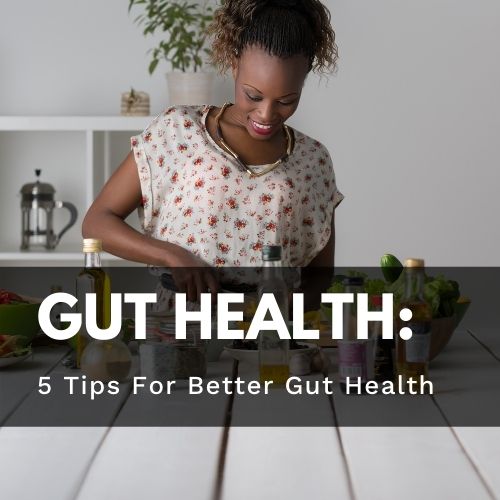Your Cart is Empty
COLLECTIONS:
SPECIAL OFFERS:
LEARN:

Healthy or Hype: Plant Based Meat
November 02, 2021 5 min read
Plant-based meats are gaining popularity, but are they really all that they’re hyped up to be?
Many people go to plant-based meats to help reduce their red meat consumption and improve their health.
So are plant-based meats healthy? Read on below...

Types of Plant-Based Meats
If you go to the supermarket, or see commercials on TV, many places are promoting plant-based meats as a healthier option.
Some common plant-based meats(1) include:
- Impossible Burger- Beyond Meat
- Beyond Sausage
- Tyson’s Plant Based Nuggets
- Good Catch Fish-Free Plant-Based Tuna

Why Plant Based Meats Aren’t All They’re Cracked Up to Be
Although plant-based products are claimed to be healthier, it’s important to look at what’s actually in them (2).
Common Ingredients in Plant-Based Meats:
- Soy (soy protein isolate, soy lecithin): although research is mixed on the health effects of soy, some research has found soy to have a negative impact on the thyroid hormone. In addition, soy is the number one genetically modified crop in the world, and a study from the International Journal of Clinical Medicine stated that high exposure to glyphosate (which is a common ingredient in genetically modified foods) is associated with increased frequency of health issues. Furthermore, the World Health Organization has determined that glyphosate is potentially harmful to the human body (3,4,5).
- Canola Oil: a common oil used in many processed foods. This oil has a high Omega-6 Fatty acids content, which the modern diet is already excessively high in. For example, a healthy balance of Omega 3:6 should be 1:1, but the average Standard American Diet is estimated to be around 1:15. Additionally, more than 90% of canola oil is genetically modified (6,7). You can read more about vegetable oils here.
- Laxatives: an ingredient called methylcellulose is a laxative found in many plant-based meats that is used as a thickener and emulsifier. Consumption can lead to digestive symptoms such as gas, bloating and cramping (8).
- "Natural Flavors":a very loose term that the FDA hasn’t officially defined. Natural flavors can come from a plant or animal, or from man-made chemicals. Since it’s a loose term, it’s hard to know what the “natural flavors” are actually made of (9).
Furthermore, when it comes to an ingredient list, it’s best to keep it as simple as possible.
Below is an example of an ingredient list for a common plant-based burger (the Impossible Burger) (10):
Whereas, the ingredient list for an organic, grass-fed beef patty is one simple ingredient:
Focusing more on meats with one, minimally processed ingredient provides more nutrient value, while not providing any additional additives which may be harmful for health.
Lastly, plant-based burgers can contain more sodium and saturated fat than traditional beef.
For example, the Beyond Burger has 390 mg of sodium, whereas a 85% lean beef patty has only 80 mg. Saturated fat content for the Impossible Burger is 8 grams per 4 ounces, whereas an 85% lean beef patty has 6 grams of saturated fat (11).

Is All Red Meat Really Worth Avoiding?
Many people avoid red meat to reduce their saturated fat intake, but it’s important to look at the diet as a whole, versus just one piece of it.
Also, research has found that saturated fat is not the major issue; it’s a combination of excessive carbohydrate intake, sugar consumption, stress, quality of sleep and movement that play a role in negatively impacting heart health (12,13).
Ultimately, it’s our lifestyle that either improves or health or reduces it, not just one nutrient or food.
What to Eat Instead of Plant-Based Meats
So you might be wondering, what should you eat instead of plant-based meats?
I always recommend going back to the basics and focusing on foods that are minimally processed.
Grass-fed beef is highly nutritious and made with just one simple ingredient.
Grass-fed beef also contains a higher amount of Omega-3 Fatty acids, which have been shown to help reduce heart disease risk, reduce inflammation in the body, and may potentially reduce the risk for other health conditions (14,15,16).
Additionally, grass-fed beef contains higher levels of antioxidants from Vitamin A and E, which also helps promote health (17).
If you’re looking for other options besides red meat, opt for some of these options below:
- Organic chicken or turkey
- Wild-caught fish
- Organic eggs
- Organic dairy
- Beans and legumes

Conclusion
Plant-based meats are most likely not going anywhere anytime soon, so educating yourself on the ingredients they contain is key.
When it comes to our health, remember that keeping it simple is best.
Focus on foods with the least amount of ingredients, in their whole form, and not man-made.

Autumn Enloe, MS, RD, LD, CLT
Autumn Enloe is a registered dietitian in Minnesota. She has a private practice where she focuses on helping women take care of themselves through proper nutrition, supplement and lifestyle adjustments. She provides remote nutrition coaching and frequently posts free nutrition content and recipes at her website:www.autumnenloe.com. In her free time she enjoys chasing around her toddler, laughing with her husband, creating recipes in the kitchen, and practicing yoga.
__________________________
References:
1) TodayShow. (2019, August 8). Want to try out plant-based meat? Here are our top 10 product picks. Retrieved from https://www.today.com/food/what-plant-based-meat-here-are-our-top-10-product-t160303.
2) Gmo. (2019, November 1). Rat Feeding Study Suggests the Impossible Burger May Not Be Safe to Eat. Retrieved from https://www.gmoscience.org/rat-feeding-studies-suggest-the-impossible-burger-may-not-be-safe-to-eat/.
3) Divi, R. L., Chang, H. C., & Doerge, D. R. (1997, November 15). Anti-thyroid isoflavones from soybean: isolation, characterization, and mechanisms of action. Retrieved from https://www.ncbi.nlm.nih.gov/pubmed/9464451.
4): Avila-Vazquez, M., Maturano, E., Etchegoyen, A., Difilippo, F.S. and Maclean, B. (2017) Association between Environmental Exposure to Glyphosate. International Journal of Clinical Medicine, 8, 73-85. https://doi.org/10.4236/ijcm.2017.82007
5) GMO Facts. (n.d.). Retrieved from https://www.nongmoproject.org/gmo-facts/.
6) Berger, M. E., Smesny, S., Kim, S.-W., Davey, C. G., Rice, S., Sarnyai, Z., … Amminger, G. P. (2017, August 29). Omega-6 to omega-3 polyunsaturated fatty acid ratio and subsequent disorders in young people with at-risk mental states: a 7-year longitudinal study. Retrieved from https://www.ncbi.nlm.nih.gov/pmc/articles/PMC5611753/.
7) Schafer, M. G., Ross, A. A., Londo, J. P., Burdick, C. A., Lee, E. H., Travers, S. E., … Sagers, C. L. (2011). The establishment of genetically engineered canola populations in the U.S. Retrieved from https://www.ncbi.nlm.nih.gov/pmc/articles/PMC3187797/.
8) Methylcellulose (Laxative) Oral : Uses, Side Effects, Interactions, Pictures, Warnings & Dosing. (n.d.). Retrieved from https://www.webmd.com/drugs/2/drug-6391/methylcellulose-laxative-oral/details.
9) Farris, A. L. (2010). The "natural" aversion: the FDA's reluctance to define a leading food-industry marketing claim, and the pressing need for a workable rule. Retrieved from https://www.ncbi.nlm.nih.gov/pubmed/24475548.
10) What are the ingredients? (n.d.). Retrieved from https://faq.impossiblefoods.com/hc/en-us/articles/360018937494-What-are-the-ingredients-.
11) Gelsomin, E., & Mla. (2019, August 8). Impossible and Beyond: How healthy are these meatless burgers? Retrieved from https://www.health.harvard.edu/blog/impossible-and-beyond-how-healthy-are-these-meatless-burgers-2019081517448.
12) Malhotra, A. (2013, October 22). Saturated fat is not the major issue. Retrieved from https://www.bmj.com/content/347/bmj.f6340.full.
13) Malhotra, A., Redberg, R. F., & Meier, P. (2017, August 1). Saturated fat does not clog the arteries: coronary heart disease is a chronic inflammatory condition, the risk of which can be effectively reduced from healthy lifestyle interventions. Retrieved from https://bjsm.bmj.com/content/51/15/1111.
14) Peter, S., Chopra, S., & Jacob, J. J. (2013, May). A fish a day, keeps the cardiologist away! - A review of the effect of omega-3 fatty acids in the cardiovascular system. Retrieved from https://www.ncbi.nlm.nih.gov/pmc/articles/PMC3712371/.
15) Calder, P. C. (2006, June). n-3 polyunsaturated fatty acids, inflammation, and inflammatory diseases. Retrieved from https://www.ncbi.nlm.nih.gov/pubmed/16841861.
16) Zhong, X., Fang, Y.-J., Pan, Z.-Z., Li, B., Wang, L., Zheng, M.-C., … Zhang, C.-X. (2013, September). Dietary fat, fatty acid intakes and colorectal risk in Chinese adults: a case-control study. Retrieved from https://www.ncbi.nlm.nih.gov/pubmed/23377001.
17) Descalzo, A. M., Rossetti, L., Grigioni, G., Irurueta, M., Sancho, A. M., Carrete, J., & Pensel, N. A. (2007, February). Antioxidant status and odour profile in fresh beef from pasture or grain-fed cattle. Retrieved from https://www.ncbi.nlm.nih.gov/pubmed/22063662.
Leave a comment
Comments will be approved before showing up.
Also in Health
Subscribe
Sign up to get the latest on sales, new releases and more …
Join the Utzy Naturals Club!
Sign up and get the latest on sales, new releases, and more...










